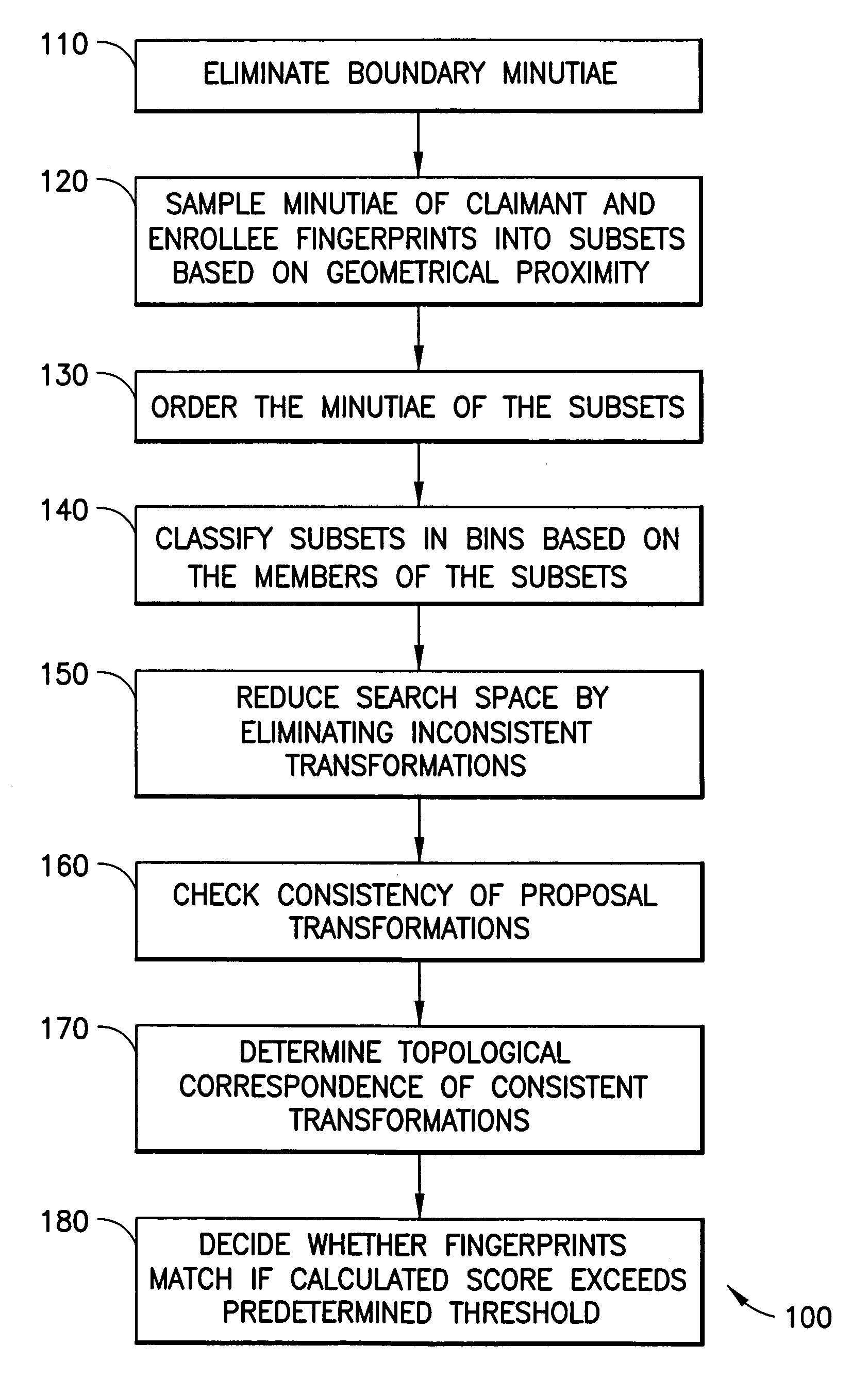Fingerprint verification
a fingerprint verification and fingerprint technology, applied in the field of fingerprint verification, can solve the problems of destroying the distance relationship between some minutiae, various limitations of conventional fingerprint verification methods, and existing fingerprint verification methods necessarily compromising accuracy, so as to improve the robustness of fingerprint verification, improve the accuracy, and improve the effect of verification speed
- Summary
- Abstract
- Description
- Claims
- Application Information
AI Technical Summary
Benefits of technology
Problems solved by technology
Method used
Image
Examples
embodiment verification
Technique
[0054]An embodiment of the invention is now described with respect to a general verification technique which attempts to address limitations of prior art techniques in relation to the speed and accuracy of verification. FIG. 1 outlines the steps of an algorithm according to an embodiment of the invention.
[0055]Initially, in step 110, minutiae which are near the boundary of their fingerprint are eliminated from further consideration. In step 120, minutiae are sampled into subsets, in some cases pairs, based on their geometrical proximity. All the members of each subset are ordered by an appropriate ranking criteria which is indicative of a correspondence between the minutiae of different fingerprints, in step 130. The subsets are classified into one of a number of classification bins, in step 140. The bins discriminate between subsets based on the members of the subsets, and their associated properties: a number of different schemes are possible.
[0056]In step 150, the potent...
PUM
 Login to View More
Login to View More Abstract
Description
Claims
Application Information
 Login to View More
Login to View More - R&D
- Intellectual Property
- Life Sciences
- Materials
- Tech Scout
- Unparalleled Data Quality
- Higher Quality Content
- 60% Fewer Hallucinations
Browse by: Latest US Patents, China's latest patents, Technical Efficacy Thesaurus, Application Domain, Technology Topic, Popular Technical Reports.
© 2025 PatSnap. All rights reserved.Legal|Privacy policy|Modern Slavery Act Transparency Statement|Sitemap|About US| Contact US: help@patsnap.com



